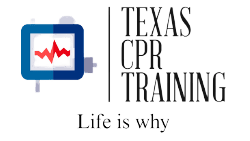
Understanding Obesity
One in six children in the U.S. are obese and Texas has the 10th highest population of obese residents. According to the National Institute of Health more than two thirds of American Adults are currently considered to be obese or overweight.
Obesity isn’t always the result of just poor food choices and lack of exercise alone. For some individuals obesity is the result of an underlying health issues such as hypothyroidism, insulin resistance, polycystic ovary syndrome, and Cushing’s syndrome. Genetics, medication, and psychological factors are also common causes of obesity.
Inactivity
Advertising and screen time are extraneous factors that promote obesity. People these days spend a lot of time in front of screens, on the computer, tablets, watching TV, and on their phones. This takes away time for physical activities and exposes us to advertisements of unhealthy foods that are high in calories, fat, salt, and sugar content. Almost half of all U.S. middle schools and high schools advertise less than healthy food choices in their cafeterias and vending machines. Companies that produce sweets and unhealthy treats primarily market their products towards children and adolescents.
Unfortunately limited access to affordable healthy foods is also a cause of obesity. In rural and low income neighborhoods it can be hard for people to choose healthy foods. There is an abundance of unhealthy foods available for a low price that are ready to eat or can be cooked instantly in a microwave. Healthier foods are often more expensive and advertising is next to none in comparison.
The way in which obesity is determined varies slightly for adults and children. For adults the body mass index (BMI) is used to calculate the amount of fat in the body. Children grow at their own pace so their BMI is charted on a growth curve and measured as a percentile.
BMI
BMI of Adults 20 Years of Age or Older
Normal Weight 18.5 – 24.9
Overweight 25 – 29.9
Obese 30 – 39.9
Morbidly Obese 40 +
BMI of Children and Youth 2 to 19 Years of Age
Overweight or Obese 85% or more
Obese 95% or more Health risks for adults who are overweight and obese include type 2 diabetes, high blood pressure, heart disease, nonalcoholic fatty liver disease, osteoarthritis, stroke, and certain cancers (breast, colon, endometrial, and kidney). Children that suffer from childhood obesity are at a higher risk for developing type 2 diabetes, asthma, and heart failure.
Type 2 diabetes was previously named adult-onset diabetes as it is not congenital (present at birth). This type of diabetes develops after birth as a result of physical and lifestyle circumstances. If left untreated it can be fatal. Asthma and heart failure develop because the extra weight puts a strain on the body requiring it to work harder. Obesity is an epidemic that seems to be worsening with our increased ease of access to screens and errand apps. Since 1980 obesity rates for children have doubled and for adults it has tripled. The longer an individual is obese the higher their risk for developing health problems. It is important to recognize that positive changes are necessary in our society as a whole to combat the rise of obesity in America.
Making Changes
For people who are already obese or who are on the road to obesity making positive changes can seem easier said than done. Although it may feel challenging if we make a concerted effort as a society we can all lead by example. Make a healthy change by:- Increasing physical activity– Sleeping properly (7-9 hours a night)
– Reducing stress
– Limiting TV/ screen time
– Limiting your time sitting/ not moving around
– Spend time outdoors
Small Changes Can Help
The good news is that you can take steps to lose weight. And losing even some weight can make a big difference to your health and how you feel. You may not have to lose as much as you might think in order to start seeing health benefits.
As a start, aim to lose 1-2 pounds a week. Adults who are overweight or obese should try to lose 5% to 10% of their current weight over 6 months, according to the National Heart, Lung, and Blood Institute.
If you’re ready to get started with a weight loss program, ask your doctor to help you set personal goals and refer you to other professionals who can give you tips and help you reach your goals. For example, a nutritionist can help you with a food plan, and a physical therapist or trainer can help you move more.
American Heart Association
Medline Plus
Centers for Disease Control and Prevention
Obesity Society
WebMD
